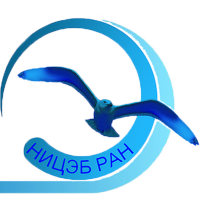Samsung Samsung Review of Scientific Research Center of ...
An unusual building with an architectural design, ...
An unusual building with an architectural design, above the Moskva River, from the height of the Sparrow Hills, is the "home" of Russian sages. Heir to the St. Petersburg Academy of Sciences, she used to stay (in 1725-1917) in St. Petersburg. The Academy was founded on 28.01. (08.02.) 1724 by the decree of the Russian Emperor Peter 1. It was named the Academy of Sciences, the Academy of Sciences and Arts, and the Russian Academy of Sciences (from 1725). Since 1747 - the Imperial Academy of Sciences and Arts in St. Petersburg. From 1803 - to the Imperial Academy of Sciences. From 1836 - to the Imperial St. Petersburg Academy of Sciences. In March 1917, the academicians proposed a new name - the Russian Academy of Sciences,
which was subsequently approved by the Provisional Government and entered into force, in October 1917. Then, the RAS is the highest scientific institution of the Russian Republic,
Soviet Russia and the USSR (1917-1925). For the first time the principle of election was introduced on 05/15/1917. The first president was an outstanding geologist A.P. Karpinsky. Russian mining engineer, geologist, academician since 1896, was from the Perm province of the Russian Empire. Father " Russian geology "died on 07/15/1936. He was the first to seriously study the structure and development of a particular platform of the earth's crust. For his services, in his honor, prizes and awards were established,
named the city - Karpinsk, earlier
Bogoslovsk in the Sverdlovsk region. And also: city streets,
ship, institute, volcano and
ridge in the Kuril Islands,
a mountain, a cove, a trail, a family and species of fossils, and even a crater on the far side of the moon. Here is a memory ...! On 01/01/1918, there were 45 academicians (full members) and 212 scientific and scientific-technical employees in Ran. Many scientists did not accept the revolution of 1917. However, the academy did not refuse professional cooperation with the new government. People of science cannot but realize that without their work, education and culture are inconceivable, and without these postulates a worthy human existence is impossible. Perhaps this slogan is still relevant today. Isn't it ...? Since 1918, scientific research institutes began to be created in the system of the academy. The number of scientific employees of the academy by 1925 had grown 4 times, compared with 1917. 07/27/1925, by the decree of the Central Executive Committee of the USSR and the Council of People's Commissars of the USSR, the Academy was proclaimed "the highest all-Union scientific institution" and was named the Academy of Sciences of the USSR. The community of "Russian sages" underwent a reorganization in 2013. The current President of the Russian Academy of Sciences, since September 27, 2017, A.M. Sergeev. A Soviet and Russian physicist, originally from the Gorky region. He is a doctor of physical and mathematical sciences, an expert in the field of plasma physics, femtosecond Optics, nonlinear dynamics of optical systems and highly sensitive optical measurements. Winner of many awards and author of more than 21,000 papers published in scientific journals. Approved in the position for 5 years. There were 4 more challengers-scientists. The strongest won. Here is his opinion on the reorganization of science. Science in the country should implement and coordinate the strategy of scientific and technological development. Funding for the RAS should be increased by 60 billion rubles a year. Large scientific projects of global importance are needed. It is tempting, isn't it? I would like to see the results. Today, the RAS includes more than 400 scientific institutions (including homes of scientists, hospitals,
sanatoriums and ...) RAS cooperates with almost 60 countries of the world. Member of UNESCO. It includes 11 specialized (by fields and areas of science) and 3 regional departments (Siberian, Ural and Far Eastern), as well as 15 regional research centers in the regions and republics of the Russian Federation. The total number of employees in scientific organizations of the Russian Academy of Sciences is about 100 thousand, of which about half are scientific workers, including over 530 academicians and about 800 corresponding members of the RAS. The number of doctors and candidates of science changes "like prices in stores." And the building is beautiful at dusk, when the lights turn on. I would very much like Russian science not to be at "dusk" and we would be proud of it, as we are proud of our parents and children. And the view from the observation deck, on the Moskva River, the complex of retro "Stalinist skyscrapers" and the current skyscrapers of Moscow City, and the beautiful Moscow is simply gorgeous and delightful. Impressive. It's up to our science. It should also be impressive ...

Comments: